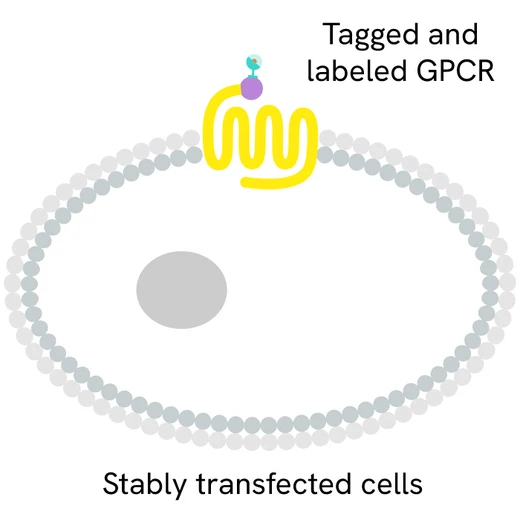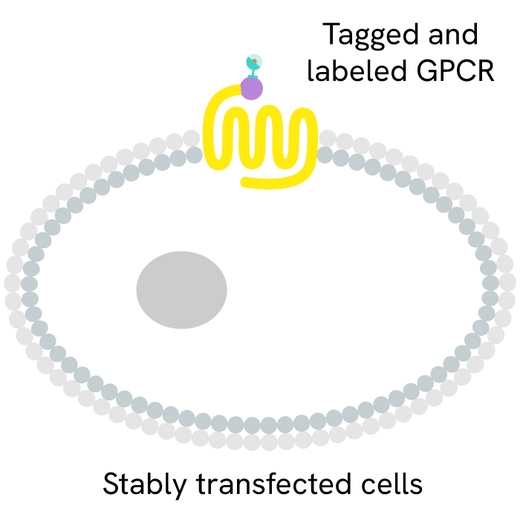

Tag-lite Orexin-2 Receptor (OX2R) Frozen & Labeled Cells, 200 Assay Points








| Feature | Specification |
|---|---|
| Application | Receptor-Ligand Binding |









Loading...
Product information
Overview
Two orexin receptors, OX1R and OX2R, also named HCTR1 and HCTR2, have been characterized to date. Studies show that both OX1R and OX2R play a broad regulatory role in the central nervous system and could regulate feeding, sleep, emotion, and reward functions.
Cells expressing the OX2 receptor are provided pre-labeled with Terbium, and can be used to conduct receptor binding studies on the aforementioned receptor.
How it works
Assay principle
Running your OX2 receptor binding assay using Tag-lite is as easy as it can gets. Simply dispense 10 µL of labeled cells into each well, followed by 5 µL of labeled ligand and 5 µL of the compound you wish to test. Like all HTRF assays, Tag-lite assays do not require any washing steps. A diagram of the procedure to be followed is given on the right.

Saturation binding (KD)
A saturation binding assay measures total and non-specific binding for increasing concentrations of ligand under equilibrium conditions. To perform the assay, the fluorescent ligand is titrated into a solution containing a fixed amount of labeled cells and then incubated to equilibrium. The HTRF ratio obtained from this titration is the total binding.


Competitive binding (KI)
A competitive binding assay is performed to measure the dissociation constant, Ki. To perform the assay, the compound is titrated into a solution containing a fixed concentration of fluorescent ligand and a fixed amount of cells.


Assay validation
Kd and Ki validation
Examples of data obtained using Orexin OX2 labeled cells and their matching fluorescent ligand. Orexin A was used as reference ligand. Results may vary from one HTRF® compatible reader to another.


Specifications
| Application |
Receptor-Ligand Binding
|
|---|---|
| Brand |
Tag-lite
|
| Detection Modality |
HTRF
|
| Product Group |
Cells
|
| Shipping Conditions |
Shipped in Dry Ice
|
| Target Class |
GPCR
|
| Technology |
TR-FRET
|
| Therapeutic Area |
Cardiovascular
Infectious Diseases
Metabolism/Diabetes
NASH/Fibrosis
Neuroscience
Oncology & Inflammation
Rare Diseases
|
| Unit Size |
200 assay points
|
Video gallery
Resources
Are you looking for resources, click on the resource type to explore further.
G-protein coupled receptors (GPCRs) are crucial transmembrane proteins involved in cellular signal transduction.
This technical...
This guide provides you an overview of HTRF applications in several therapeutic areas.
Tag-lite™ is a cell-based, no-wash alternative to traditional radioisotope assays for studying GPCR-ligand interaction.
Adenosine...


How can we help you?
We are here to answer your questions.






























